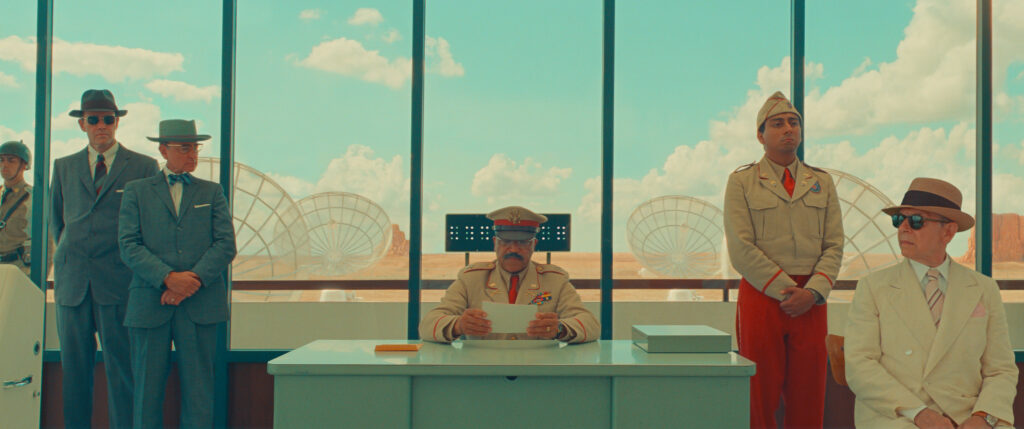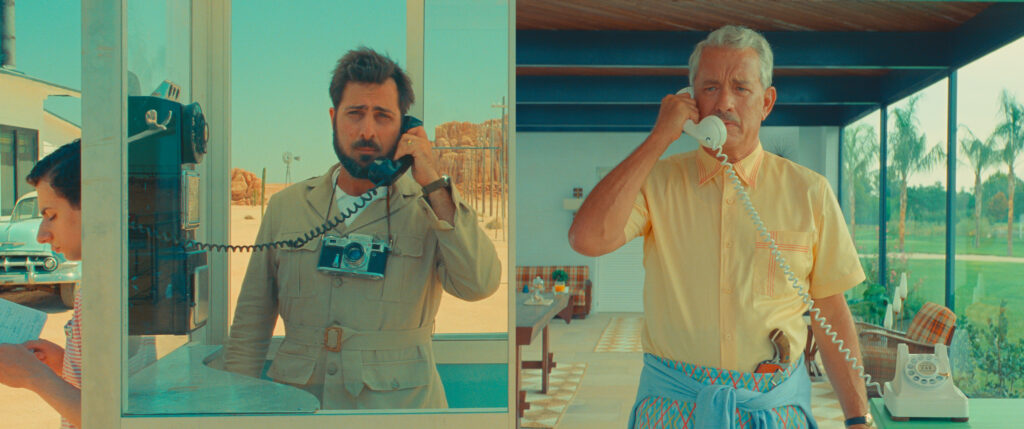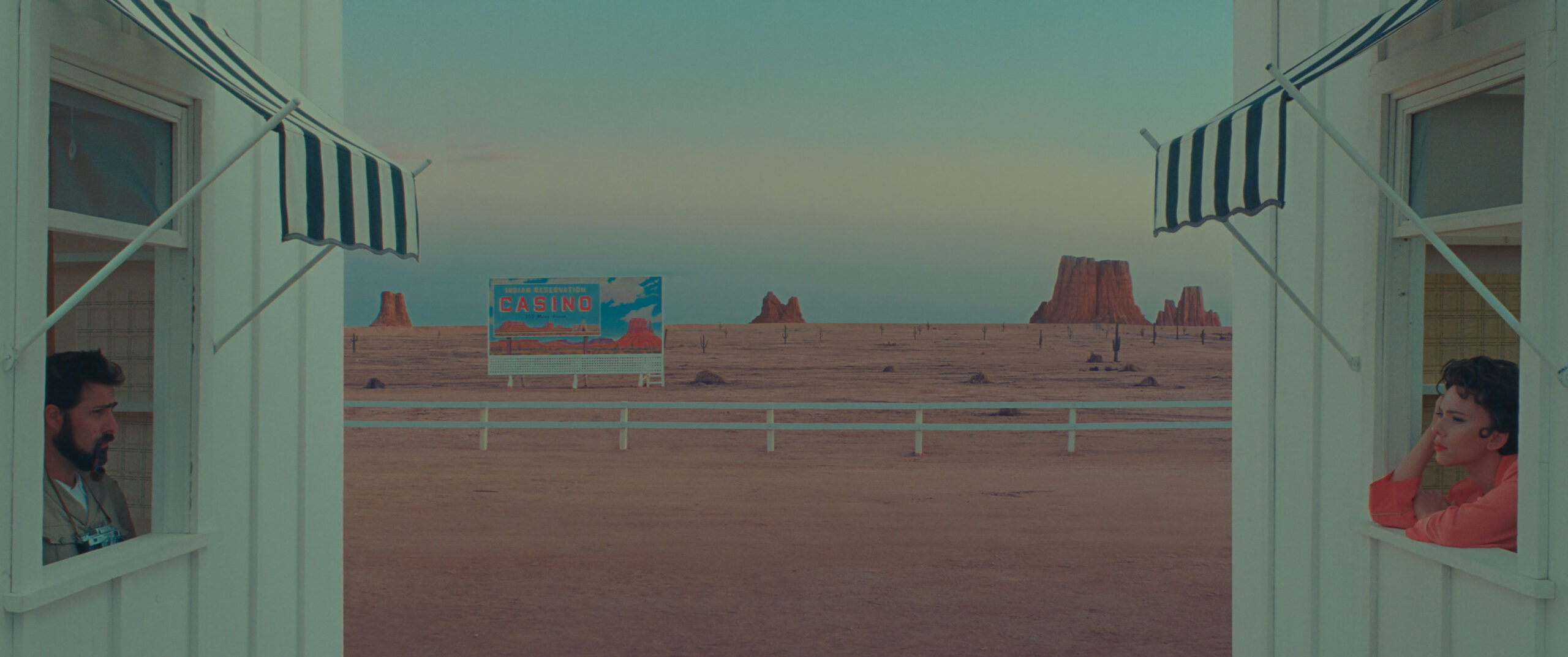Full of the intentional artifice and production design that make a Wes Anderson film unique, Asteroid City once again allows the filmmaker to inject every creative decision of his with a source of meaning. In the case of this film, the filmmaker takes aim not just at the meaning of life, but how the meaning of our hobbies and interests intersect with the hand we’ve been dealt. Anderson has always had a flair for bringing a distinct visual style to film. From the start, Bottle Rocket showed his prowess for capturing specific imagery, and while it has exponentially grown in the years since, the blueprint seems to have always been in his back pocket. There are very few filmmakers, if any, who can create and capture a world in the same way. And when watching Asteroid City, one begins to think about why he will extend himself so far for the sake of cinema. As the film highlights children who will do just about anything for attention, broken men scrambling for some semblance of control, and a town built around a single event thousands of years ago, it makes clear that life is painfully fragile. When watching any of his films, it’s evident that Anderson uses some of his elaborate designs as an escape. No matter how much we might try to, we cannot control the world around us. Life will always follow its path and barrel through any attempt to stop it. In my view, film was born through both the struggle and acceptance of this fact.
Within the realm of filmmaking, artists have the opportunity to do whatever they want, seemingly free of the limits of reality. In Asteroid City, the characters exist in the real world (for the most part). But, as an audience member of Asteroid City, the lines become blurred, and we witness something special. Sure, it’s a wildly entertaining film, but what makes it, and the career of Anderson, so special, is that it always reminds us that anything can be done within the boundaries of a screen. There’s a semblance of control in a world that’s rapidly losing it. Coming from a filmmaker so locked into his own style, he’s able to garner more control within any single frame than most. Considering he’s one of the more beloved artists currently working in film, it’s clearly paying off.

With Asteroid City, Anderson is working within many realms. It has its roots and a clear adoration for 50’s science fiction. It’s concerned with and inspired by the mid to late 50’s arrival of The Actor’s Studio. Anderson built a full Technicolor Western town in the middle of Spanish farmlands, and regardless of what the Internet might think, he pulled it all together for reasons larger than it happening to look pretty. Too long has Anderson been pigeonholed into this notion that all his films have to offer is stylistic flourish. The gorgeous color palettes and razor-sharp framing is only a means to an end–a way to draw the audience in, and as I mentioned earlier, to essentially bring forth some semblance of control in a world where his characters lack it.
Take, for example, Augie Steenbeck (Jason Schwartzman) and his four children. En route to Asteroid City for an awards ceremony celebrating scientific achievement, Augie has yet to tell his children that their mother passed away weeks ago. Anderson is more than willing to give his lead protagonist many selfish choices to make, but the way the script comes together alongside Schwartzman’s tragic line readings, one can only help but see a man crippled with grief. Not only that, but Augie is also a man so focused on the clinical and pragmatic approach to life that viewers will immediately recognize that he is incapable of hearing his own soul crying for help. His conversations with his children are direct and to-the-point, and even he recognizes that what he’s telling them will not be fully understood. In the hands of another filmmaker, this feels as if it’s a plot that could take up an entire film. And yet, while Augie’s journey feels like the central narrative of Asteroid City, Anderson seems to be just as interested in every other member of the town, as well.

In an almost miraculous manner, Anderson and cinematographer Robert Yeoman introduces the entire town with complete ease using just a singular camera movement. It’s one of the many stylistic flourishes Anderson uses in this film, as well as throughout his entire career, to resonate with the viewer. There’s a particular moment using split-screen that turns from such fun to emotional devastation with nothing but a shift in camera placement. To the critics of Anderson who claim his films are hollow: you’re simply refusing to look. Every film of his is packed with emotion, revolving around themes that are deeply universal to every human. Nearly every character in this film is dealing with some semblance of grief, whether it be on a personal or an existential level.
As earth-shattering events occur that force every character to reevaluate the very foundation of their existence, Anderson still finds a way to one-up himself. As the layered elements of Asteroid City converge upon one another, the audience is left with a universal truth. It seems Anderson is beginning to question whether we could ever truly understand the meaning of life, or the meaning of art, or even the meaning of the choices we make. Even so, in the wake of all the infinitesimal unknown that stands before us, we simply have to continue–continue living, continue telling stories as artists, continue taking in stories as an audience. What happened 5,000 years ago in this sleepy, yet vibrant, town of Asteroid City may not seem like a lot, but it found its way into the stories of every individual that ended up in Anderson’s town. And in turn, it found its way into our lives, through Anderson. We can only hope that Anderson will continue to give us stories to ponder and lives to experience for many years to come, because not only will cinema be more enriched because of it, but so will we.
Focus Features will release Asteroid City exclusively in NY/LA on June 16, and in theaters everywhere June 23.
